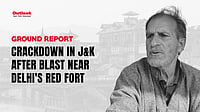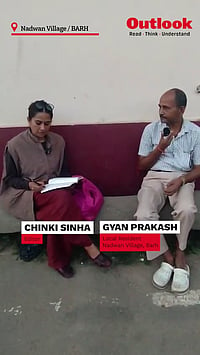Since 9/11, there has been hardly any jihadi terrorist strike anywhere in theworld in which there was no Pakistani connection. Since 2002, there has beenhardly any jihadi terrorist strike in Pakistani territory in which there was noconnection of the General Headquarters (GHQ) of the Pakistan Army. By GHQ, onedoes not mean the entire army. One means some elements in the GHQ.
The first wake-up call about the possible presence of one or more sleepercells of Al Qaeda in Rawalpindi came in March, 2003, when Khalid Sheikh Mohammad(KSM), who allegedly orchestrated the 9/11 terrorist strikes in the US, wasfound living in the house of a woman's wing office-bearer of the Jamaat-e-Islamiin Rawalpindi. She had relatives in the army, including an officer of a Signal Regiment.
The second wake-up call came after the two attempts to assassinate PresidentPervez Musharraf in Rawalpindi in December,2003.The Pakistani authorities havenot so far taken their public into confidence regarding the details of thetwo plots. All that they admitted was that four junior officers of the Army and six of the Air Force were allegedly involved. One of the army officersnamed Islamuddin was court-martialed and sentenced to death even beforethe investigation was complete. Another army officer named Havaldar Younis wassentenced to 10 years rigorous imprisonment. Much to the discomfiture of theauthorities, one of the Air Force officers, a civilian, who was being heldin custody in an Air Force station, managed to escape.
There are still many unanswered questions about the conspiracy to killMusharraf. Who took the initiative in planning this conspiracy? The arrestedjunior officers of the Army and the Air Force or the leaders of thesuspected jihadi organisations? When was the conspiracy hatched? How didPakistan's Inter-Services Intelligence (ISI) and the IntelligenceDirectorates-General of the Army and the Air Force remain unaware of thisconspiracy despite the fact that the conspirators had allegedly held some oftheir preparatory meetings in their living quarters in militarycantonments and Air Force stations? Was there a complicity of some in the intelligence establishment itself? If so, at what level? Why was the Governmentunable to identify those in the intelligence establishment involved in theconspiracy? Was there an involvement of the Hizbut Tehrir?
These questions re-surfaced in the wake of the arrest of Abu Faraj al-Libiof Al Qaeda and the re-arrest of the civilian employee of the Air Forceinvolved in the conspiracy, who had managed to escape from custody inNovember,2004, while under interrogation. That there were apprehensions in theminds of those close to Musharraf over the role of sections of the intelligenceestablishment in the entire conspiracy and over the failure of the investigatingagencies to unravel the entire conspiracy became evident from aninterview given by Dr.Aamir Liaqat Hussain, the then Minister of State forReligious Affairs, to the Daily Times on May 5, 2005.
The Minister warned that Musharraf had a lot of enemies ‘within’who could make an attempt on his life again at any time. He said that there werecertain elements within the forces who could attack the General. He added: "Nocommon people could attack President Musharraf, but certainly there areelements in the forces who can launch yet another attack against him. There isan ISI within the ISI, which is more powerful than the original and stillorchestrating many eventualities in the country." He added that he feared athreat to his own life because he supported Musharraf's call for anenlightened and moderate Islam and had been given the task of preparing thetexts of sermons advocating enlightened and moderate Islam to be used at allmosques of the Armed Forces.
Well-informed sources in Pakistan said that apart from the failure of theintelligence establishment to identify and weed out the pro-jihadi elements inthe Armed Forces and the intelligence establishment, another cause for seriousconcern was the continuing failure of the intelligence establishment to identifyall the Pakistani leaders of the highly secretive Hizbut Tehrir (HT) and itssupporters in the Armed Forces and arrest them. The HT ideology and operationalmethods were imported into Pakistan from the UK by its supporters in thePakistani community in the UK in 2000. It was said that within five years it wasable to make considerable progress not only in setting up its organisationalinfrastructure, but also in recruiting dedicated members in the civil society aswell as the Armed Forces. It was also reported that no other jihadi organisationhad been able to attract as many young and educated members and as manysupporters in the Armed Forces as the HT.
Physical security regulations in an office of the ISI at Rawalpindi exemptofficers of the rank of Brigadier and above coming in their own vehicle fromfrisking at the outer gate. They undergo a frisking only after they have enteredthe premises, parked their car in the space allotted to them in the garage andthen enter the building in which their office is located. Officers below therank of Brigadier undergo frisking twice, whether they are in their own vehicleor in a bus --at the outer gate and again inside before they enter thebuilding. At the outer gate, they have to get out of their vehicle, undergofrisking and then get into their vehicle and drive in.
Since all officers travel in civilian clothes in unmarked vehicles, whichcannot be identified with the Army or the ISI, there is a special handsignalling system for Brigadiers and above by which the security staff at theouter gate can recognise their rank and let them drive in without undergoingfrisking. This hand signalling is changed frequently.
On the morning of November 24, 2007, a car reached the outer gate and the man inside showed a hand signal, which was in use till the previous day. It had beenchanged on November 23 and a new signal was in force from the morning ofNovember 24, 2007. He was not aware of it. The security staff gotsuspicious and did not allow the car to drive in. They asked the man driving itto get out for questioning and frisking. He blew himself up.
As he did so, an unmarked chartered bus carrying over 40 civilian and juniormilitary employees of the ISI reached the outer gate and stopped so thatthose inside can get out for frisking. The bus bore the brunt of the explosion,which caused the death of about 35 persons-- from among those inside thebus as well as the security staff. The Pakistani authorities admitted thedeath of only 18 persons.
Around the same time, a man driving a vehicle towards the premises of the GHQin another part of Rawalpindi was stopped by the security staff at a physicalsecurity barrier. He blew himself up killing two of the security staff. Thesetwo well-synchronised suicide strikes in Rawalpindi, the sanctum sanctorum ofPakistan's military-intelligence establishment, came about six weeks after asimilar attack targeting the ISI and the Army at Rawalpindi at the same time. OnSeptember 4, 2007. a suicide attacker blew himself up after boarding a buscarrying ISI employees. A roadside bomb went off near a commercial area inRawalpindi, while a car carrying an unidentified senior Army officer to the GHQwas passing. Twenty-five persons died in the two attacks. The Army officerescaped unhurt. On October 30, 2007, a suicide bomber blew himself up at acheckpoint several hundred yards from the GHQ killing seven persons, mostof the from the security staff.
The two attacks directed at the ISI and another at a Pakistan Air Forcebus at Sargodha were based on inside information. In the case of the explosionat the outer gate of the ISI complex on November 24, 2007, the suicide bomberwas aware of the hand signalling code for Brigadiers and above. However, he wasnot aware that the signal code had been changed the previous day. Since thesecodes are communicated personally to Brigadiers and above, their existence issupposed to be known only to Brigadiers and above and the physical securitystaff. The suicide bomber's inside accomplice was either an ISI officer of therank of Brigadier or above or a member of the physical security staff.
There are two alarming aspects of the security situation in Pakistan. Thefirst is the upsurge in acts of suicide terrorism directed against security andintelligence personnel and their establishments. These give clear evidence ofthe penetration of pro-Al Qaeda jihadi elements inside the Armed Forces,the intelligence agencies and the Police. The second is the inability orunwillingness of the Police to vigorously investigate these incidents, includingthe attempt to kill Mrs. Benazir Bhutto in Karachi on October 18, 2007. Nobodyknows definitively till today who are responsible for these suicide attacks--tribal followers of Baitullah Mehsud of South Waziristan or those of MaulanaFazlullah of the Swat Valley or the Lashkar-e-Jhangvi (LEJ), the anti-Shiasectarian organisation, or Al Qaeda and its Uzbek associates or the angrystudents of the two madrasas run by the Lal Masjid in Islamabad?
The Rawalpindi cantonment where the headquarters of the Army and othersensitive units of the Pakistan Army and the ISI are located, and the adjoiningIslamabad, the capital, where the headquarters of the federal Government and theNational Assembly are located, had seen terrorist strikes even in thepast. Amongst them, one could mention the 1989 explosion in the Rawalpindioffice of Dr. Farooq Haider, the then President of one of the factions of the Jammu & Kashmir Liberation Front (JKLF), which was attributed to a rivalfaction led by Amanullah Khan; the explosion outside the Egyptian Embassy atIslamabad in the 1990s, which was attributed to some Egyptian opponents of President Hosni Mubarak; the grenade attack inside an Islamabad churchfrequented by the diplomatic community in March 2002 in which the wife of a USdiplomat and their daughter were killed; the unsolved assassination ofMaulana Azam Tariq, the Amir of the Sipah-eSahaba, Pakistan, the political wingof the Lashkar-e-Jhangvi, at Islamabad in 2003, the terrorist attackon a a group of workers of the Pakistan People's Party (PPP) of Benazir Bhuttoin Islamabad earlier this year, the alleged firing of a rocket on Musharraf'splane from the terrace of a house in Islamabad again earlier this year and thealleged firing of rockets by unidentified elements from a park in Islamabad lastyear.
If one leaves aside the JKLF factional politics, the only terroristorganisations which had operated in the Islamabad-Rawalpindi area in thepast (before July 2007) were the Lashkar-e-Jhangvi (LEJ), which was blamedfor the church grenade attack; the Sipah Mohammad, the Shia terroristorganisation, which was suspected in the murder of Azam Tariq; and Al Qaeda. Many Pakistani and Kashmiri jihadi organisations such as the Lashkar-e-Toiba,the Hizbul Mujahideen, the Harkat-ul-Mujahideen (HUM) etc have their offices inRawalpindi, but do not indulge in terrorist activities there.
There was no evidence to show that the Egyptians responsible for theexplosion outside the Egyptian Embassy were then the followers of Osamabin Laden. The first indication of some local support for Al Qaeda inRawalpindi came in March, 2003, when Khalid Sheikh Mohammad (KSM), supposedlythe man who co-ordinated the 9/11 terrorist strikes in the US, was arrested fromthe house of a women's wing leader of the Jamaat-e-Islami (JEI) in Rawalpindi bythe Pakistani authorities and handed over to the USA's Federal Bureau ofInvestigation (FBI).
KSM was living in Karachi till September, 2002, when he fled from there toQuetta in Balochistan following the arrest of Ramzi Binalshibh, another Al Qaedaoperative there. From Quetta, he shifted to Rawalpindi in the beginning of2003, fearing betrayal by the Shias of Quetta. After his arrest, nothorough enquiries would appear to have been made either by the ISIor the Police to determine why he took shelter in Rawalpindi, a highlyguarded military cantonment. Did he and/or Al Qaeda have any otheraccomplices in Rawalpindi, in addition to the JEI leader and the members of herfamily, who included one junior Army officer belonging to a signals battalion,who was also detained for interrogation? Did Al Qaeda or the Pakistaniorganisations allied to it in the International Islamic Front (IIF) have asleeper cell or cells in the cantonment? If they had, the sleeper cells couldhave functioned undetected only with the complicity of at least some in theArmed Forces.
After the arrest and the handing-over of KSM to the US, anti-Musharraf andpro-jihadi pamphlets typed on the official letter-head used in the armyoffices in the General Headquarters (GHQ) in Rawalpindi started circulating inRawalpindi and Islamabad. The ISI and the Police were unable to determinewho was circulating these pamphlets and no arrests were made in this connection.Instead, a leader of the Nawaz Sharif-led faction of the Pakistan Muslim League,who drew the attention of the Parliament and the public to these pamphlets, wasordered to be arrested by Musharraf on a charge of treason.
After the April, 2003, arrest in Karachi of Waleed bin Attash of AlQaeda, one of the suspects in the case relating to the Al Qaeda attack on the USnaval ship USS Cole at Aden in October, 2000, many of the Al Qaeda membersliving in Karachi were reported to have shifted to the North-West FrontierProvince (NWFP), Balochistan , the Federally-Administered Tribal Areas (FATA)and Rawalpindi.
Their shifting to Rawalpindi and taking shelter there would not have beenpossible without the complicity of not only the Pakistani jihadi groups,but also supporters in the Armed Forces and the police. The Pakistani securityagencies have not been able to identify and dismantle Al Qaeda and IIFcells in the Rawalpindi cantonment. The fact that the perpetrators of the twoattacks of December,2003, on Musharraf , whether they belonged to Al Qaeda or toany of the Pakistani components of the IIF, chose to act on both the occasionsfrom Rawalpindi instead of Karachi where Musharraf was before the first attackon December 14 showed their confidence in being able to operate undetected fromRawalpindi rather than from Karachi.
I do not believe Musharraf had prior knowledge of the plot to kill Benazir inRawalpindi. But he has to be held responsible for failing to provide effectivephysical security to her. He and his officers kept disregarding her growingfears about threats to her security. He failed to ensure a vigorousinvestigation of the first attempt to kill her at Karachi on October,18, 2007.
The infiltration of traditional fundamentalist political parties into the GHQstarted under the late Zia-ul-Haq. Since Musharraf took over, there has been aninfiltration of Al Qaeda into the Pakistani Armed Forces and into their sanctumsanctorum in Rawalpindi. These elements are against Musharraf too,but they were much more against Benazir because of the fact that she was awoman and she had been saying openly that she would allow the US to huntfor bin Laden in Pakistani territory and the International Atomic Energy Agencyat Vienna to interrogate A.Q.Khan, the nuclear scientist. Al Qaeda and thepro-Al Qaeda jihadis wanted to eliminate both Musharraf and her becausethey were seen as apostate and as collaborators of the US.
They have succeeded in killing her. They will now step up their efforts toeliminate Musharraf. Whoever was responsible for killing her could not have doneit without inside complicity. If Al Qaeda already has sleeper cells in the GHQ,there is an equal danger that it already has sleeper cells inside Pakistan'snuclear establishment too.
Musharraf is either knowingly dishonest or is living in a make-believe worldof his own, unaware of the ground realities. Only a few days before Benazir'sassassination, he was bragging to officer trainees in the Defence Services StaffCollege in Quetta that he had defeated the terrorists outside the tribal beltand would soon be defeating them in the tribal belt too. His reluctance to orderan enquiry into the extent of infiltration of Al Qaeda into the GHQ isdisturbing. He has convinced himself that not only he is the most popular leaderof Pakistan, but also that the entire Armed Forces are devoted to him. Anybodywho says otherwise is treated by him as a traitor, arrested and harassed.
It is high time he and the US realise that Al Qaeda is not just in the tribalbelt. It is right under their nose in Rawalpindi.
B. Raman is Additional Secretary (retd), Cabinet Secretariat, Govt. ofIndia, New Delhi, and, presently, Director, Institute For Topical Studies,Chennai.
























